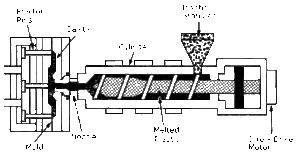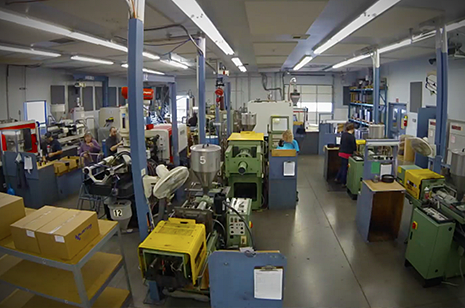- BY Rex Plastics
- POSTED IN Plastic Injection Molds
- WITH 1 COMMENTS
- PERMALINK
- STANDARD POST TYPE
Plastic injection molding is used for everything from chairs and industrial parts to Legos. Injection-molded plastic parts prove their worth whether you’re designing a new product, or even a single component in a complex assembly. On the positive side, the injection molding process ensures quality and uniformity. However, tooling a mold is expensive, and small errors can have big consequences. Here are some tips Rex Plastics has gleaned from decades’ worth of experience helping our clients get it right. 
Prototype and Iterate
CAD and 3-D plastic printing have revolutionized the design and prototyping processes. They’re a fast, effective, and inexpensive way to test everything from toys to electronics housings. Done properly with an assist from Rex Plastics, 3-D printing can be a valuable first step in your production run.
Embrace Uniformity
Uniformity of wall thicknesses in an injection-molded part or product ensures optimal flow during the molding process. This, in turn, leads to a consistent product. We will help you determine proper thickness to optimize product quality.
Transition Properly
To begin with, design your mold so the plastic flows from thick to thin. If you have a section where the wall thickness tapers off, the tapered end should be farther from the injection site to ensure uniform quality.
You should also learn to love curves. Sharp corners and transitions mean stress that’s literally built into your parts. This can mean warping, deformation, and premature wear. Using smooth radii and carefully working draft angles into your parts will ensure a better molding process and parts that are more durable.
Avoid the Sink
Sink is a phenomenon whereby the plastic shrinks as it cools and does not cool evenly as it sets. If one area cools more slowly than the rest, you’ll notice warping and indentations. Using a thinner wall size, as well as proper sizing and placement of functional elements like ribs and ramps will minimize the possibility of this occurring.
Understand Your DFM
DFM, or Design for Manufacturing, reports are how the manufacturer highlights potential concerns with the molding process. There are times when the mechanics of injection molding can cause cosmetic, fit, or function issues with your product. Our goal is to identify, and help you address, these issues before the mold is tooled.
Keep it Simple
The simpler your part design, the better. Keep in mind, however, that what seems elegant on the drawing board, or in a CAD program, may not work as well in the real world. But also remember that we share the same goal you do: to bring a product into the world that we, like you, are proud to have our name associated with.
The points listed above are only one facet of a larger process. If you’re in the early stages of designing and prototyping a product, you will also need to consider the types of plastic used, the scale of your production run, and whether plastic injection molding will be right for your project. When it comes to getting a handle on the process as a whole — from initial prototype to return on investment — the 47 years’ worth of experience that Rex Plastics brings to each client and each project proves its worth. Take time to contact us for a free quote and be sure to ask us about our free offer.



I’m currently research about plastic injection molding. These are really great tips. Short and sweet. Thanks for making this easy to understand.